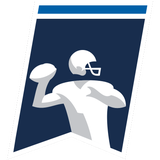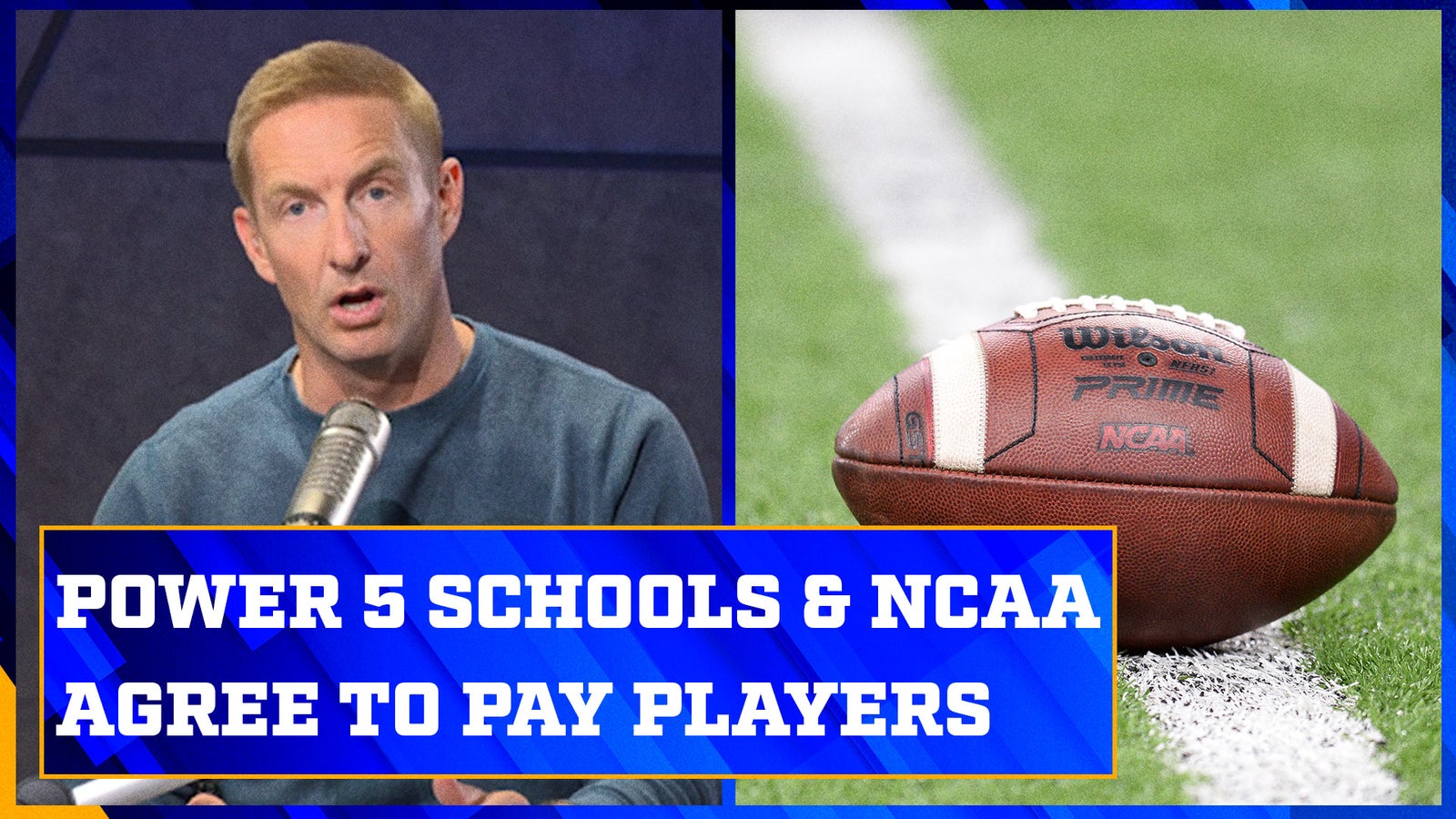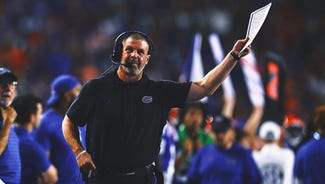
House v. NCAA settlement: What it means, why it happened and what happens next?
The NCAA and the Power 5 conferences came to an agreement last week to settle a pending lawsuit, House v. NCAA, which will allow schools to directly pay student-athletes.
There are a million ways you can talk about this. But if anyone tries to definitively tell you what exactly this means or what will happen as a result, then they're lying to you. Nobody knows exactly how this will play out.
Let's take a 30,000-foot view of the situation. The NCAA settled instead of risking losing another lawsuit – and losing this lawsuit had the potential to cripple not only the NCAA, but all of collegiate athletics.
So, for the first time, there was a galvanizing attempt to make this all go away, not only from the NCAA, but from the stakeholders within college athletics: universities, athletic directors, conferences and commissioners. There was a real unified approach for the first time in 10-to-15 years toward this lawsuit as a result.
This lawsuit isn't necessarily different than many others that threatened the NCAA in the past or are still pending. But amateurism in intercollegiate athletics is a flawed model. Any time you've got a flawed model where there's some questionable legality in terms of the rights of the people within that enterprise, you're ripe for litigation. So, the NCAA has been sued numerous times as a result.
With the growing revenue in college athletics, and players still not getting a share of it, this was inevitable. As the NCAA has lost lawsuits recently, it got the unified backing from stakeholders within collegiate athletics to build momentum to do something about it.
While there are billions of dollars of back payments involved, the main takeaway is that we have a revenue-sharing model in college football and all of college sports. The aforementioned stakeholders got involved in this because they're the ones trying to make payments to athletes in the early years of the name, image and likeness (NIL) era, along with the transfer portal. No one was ready for all of that at once, and it became messy.
Now that we know what it is, let's take a further examination of the House v. NCAA lawsuit settlement and answer a few questions: How does this affect NIL and collectives, what needs to happen next, and what's the impact on the field?
Power 5 schools, NCAA agree to allow schools to pay players directly
How does this affect NIL and collectives?
The settlement of this lawsuit will change the structure of how each university operates its NIL and collective operations. Currently, some universities will go out and raise somewhere between $5-6 million collectives while others will raise $18-20 million collectives. They raise that money from boosters on an annual basis, using that money to provide promises to student-athletes. Most of those athletes are football players, but there are other sports that get a share, and the boosters are essentially paying for play.
Like Nick Saban and many others have said, that's not the true heartbeat of what NIL was supposed to be, which was monetizing from the value of your NIL. This was essentially boosters raising a bunch of money and paying players to wear their school's uniform.
That wasn't the model anyone liked and it was totally unsustainable. Now, we have a more sustainable model with money that schools will pay the players coming from a revenue share. It can be on the books of the university's athletic department budget.
It also increases the budget for almost every school involved. We've heard different numbers, but those schools can go upward of somewhere between $19 and $25 million annually to allot to student-athletes in a real pay-for-play. Schools can now go to a certain player and say, "We'll start you and you'll receive this much money to come to our school."
This brings what was in the shadows into the light. With that money being on the books, players and their agents can't blindly pit two schools against each other.
As for collectives, they're going to have to work as a true marketing arm for the university and student-athletes. This is an important piece now. Players will still be able to enter an agreement with any company and do a deal for their true market value for their NIL. The collective can help them do that and it's better because those dollars are more traceable and you get away from one school's ability to buy players from another school.
What needs to happen next?
The NCAA has been fighting lawsuits for a long time. There have been very little differences in those lawsuits because they have a flawed amateurism model that's ripe for litigation and will lose.
The NCAA will continue to get sued unless all of this changes in a drastic way. Every time the NCAA tried to shift and say, "OK, we lost that lawsuit about NIL, but all of our rules about boosters and inducements are going to stand." Well, then the NCAA tried to enforce those rules about boosters and inducements against Tennessee. The state's attorney general turned around and sued the NCAA, along with Virgina's attorney general.
As a result of those lawsuits, the NCAA has lost its ability to govern college athletics. Those in the enterprise knew they had to change in a major way. Those in the enterprise had one cohesive and specific goal: stop getting sued. The more the NCAA gets sued, the likelihood of the enterprise being wiped away goes up.
This settlement is the first piece in achieving that goal. But there are other things that have to happen in order for the NCAA to stop getting sued. It needs three other things: Anti-trust protection from the federal government, a uniformed set of rules across state lines and a separation between revenue and non-revenue sports.
I'm not sure if the NCAA has a real path forward without antitrust protection. Antitrust laws are there for the true capitalist marketplace and protect against monopolies in this country. I'm not a true expert in all of this, but we know that the only way professional sports can operate is with antitrust exemptions. It's the model that the NCAA needs.
Congress also needs to work together on some form of legislation that provides a baseline across state lines, so that all 50 states are operating under the same rules. Can you imagine in the NFL, if the Seattle Seahawks operated in a substantially different model than the Arizona Cardinals due to their respective states' laws? You can't have two teams in the same division playing under different rules. Until we get a uniformed set of rules across state lines, we will continue to have some states suing the NCAA for the foreseeable future.
As for the separation of revenue and non-revenue sports, lawsuits will continue if it doesn't happen. Obviously, there would be questions about Title IX and how this settlement will work within Title IX.
The House v. NCAA settlement isn't going to do anything to Title IX, but it will start to pave the road toward these elements. Congress has been slow to get involved with the NCAA's recent issues. There wasn't a lot of incentive for the people in our government to get involved with what's happening with intercollegiate athletics. We've seen congressional hearings with Mark Emmert and others defending amateurism, while some are upset with their answers and people want to blow the whole thing up.
This lawsuit is important though because the NCAA and the enterprise are waving the white flag, signaling to Congress that they're ready to have a real conversation about student-athlete pay in order to achieve some common ground to get an antitrust exemption, legislation across state lines and the separation of revenue and non-revenue sports so that they aren't in the murky waters of Title IX.
Some of the athletic directors I've spoken to have wondered if part of the money schools will receive from this lawsuit is for the football team and the men's beach volleyball team or the lacrosse team. That's unsustainable from the athletic director's standpoint if it is. If they have to abide by Title IX within this revenue-sharing model, we will see massive cuts to sports across the board because there won't be enough resources to do it right.
That's not a threat, it's just reality. When you add the money from this settlement on top of the budget schools have already set aside for student-athletes, they're going to have to cut. This is why Congress is going to have to get involved. Revenue sports need a different governing body while non-revenue sports need to operate under the Olympic model. It won't be sustainable to pay a men's rower or the captain of the women's lacrosse team the same as your quarterback.
We basically have three revenue sports in the college game: football (it brings in about 70-75% of all revenue in each athletic department across the country), men's basketball (namely the NCAA Tournament) and women's basketball, with the growth of the NCAA Tournament in its sport as well. Those need to be stripped out and be governed by a different body. If not, there will be another lawsuit.
If the NCAA is able to get those three things, it can get a collectively bargained agreement. These are steps in that process. This was a great thing for the future of college football because it was a domino that had to fall in order to help the remaining dominoes fall. It'll protect the future of the sport as we're in the dawn of the golden age of college football.
How will paying players directly affect the future of college football?
What's the impact on the field?
Going back to an earlier point, collectives will serve as the marketing arm in college football and the differentiator between what players can make at one school compared to another. We know what the revenue share will be at each school, but what we don't is the marketability and NIL opportunities for players at certain schools.
Well, the same teams that are really good, on TV constantly, in marketplaces where they have access to companies, markets and capital will continue to have a bit of differentiation. That's what it is in every other sport. The quarterback of the Dallas Cowboys is more valuable than the quarterback of the Cardinals. It's different being a New York Yankee than it is being a Kansas City Royal. We can all wrap our heads around that.
If you're a university that is in a place geographically that has access to companies that can increase the market value of your players (Austin, Columbus, Detroit) or are the only game in town (Tuscaloosa) or historically have a large and passionate fan base, all the similar teams are going to be in a position to claim that they can provide more to a specific athlete than the others. The difference is, now we're going to know which schools have the best collectives.
Joel Klatt is FOX Sports' lead college football game analyst and the host of the podcast "The Joel Klatt Show." Follow him on X/Twitter at @joelklatt and subscribe to the "Joel Klatt Show" on YouTube.












